

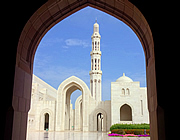
We had been planning to visit Oman for a long time before we finally got there in 2022. The people were lovely, the landscapes - especially the mountains and desert - stunning, and the villages, souks, castles and wadis captivating.
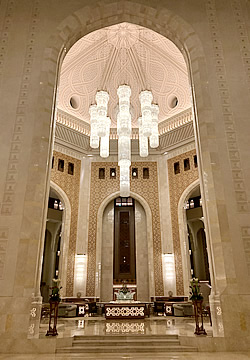
Early on our first full day in Muscat our guide, Kareem, came to pick us up for an extensive tour of the city.
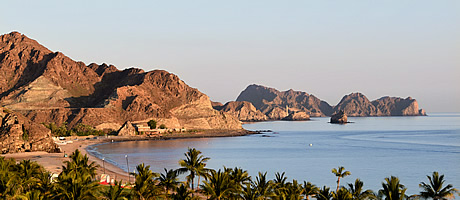
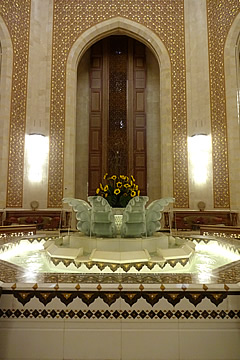
We'd arrived quite late the previous evening at our lovely hotel, the Al Bustan, after a long journey via Frankfurt from the UK. Travelling in the time of Covid is quite tortuous when many restrictions were still in place. We had already got our 2 jabs and a booster, plus the printed proof from the UK government. We'd taken a PCR test in a rather dodgy-looking, but fully certified, test centre in Leeds and spent an anxious day until receiving the message that we were both negative.
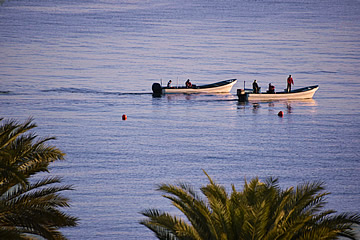
We didn't need a visa as we were staying less than 14 days, though numerous airline and airport staff on the route told us otherwise. However, we made it at last, and a driver was there to meet us at the airport and take us to the hotel.
The Al Bustan Palace is stunning, the interior spectacularly crowned with a huge crystal chandelier. It stands on the coast and has its own little stretch of beach with a bar and restaurant overlooking the Gulf of Oman.

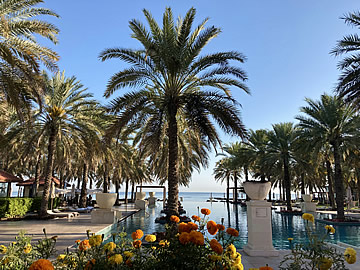
The choice at breakfast was impressive, with chefs ready and waiting to create a huge variety of freshly cooked dishes - eggs of any description with accompaniments, waffles, pancakes, etc.
Outside at our table on the terrace we were offered excellent Omani coffee with cardamom, and gorgeous dates. We were to have lots of both of these during our trip.

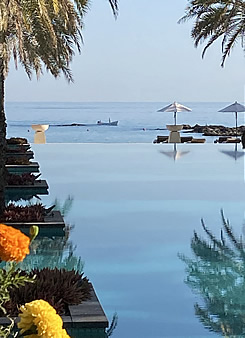
Dinner at Al Bustan was no less excellent. We dined twice at the Pavilion restaurant overlooking the sea and thoroughly enjoyed both meals, drinks in the bar beforehand or out on the terrace a perfect prelude. The lamb rack followed by warm date pudding were both superb!
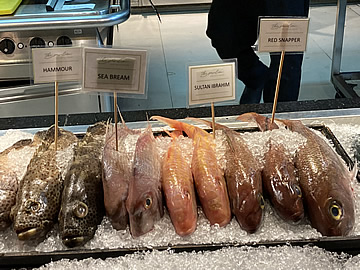
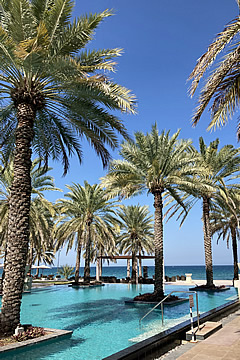
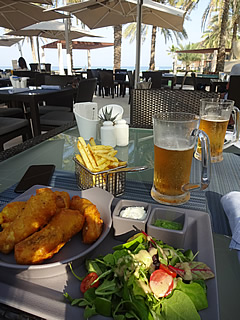
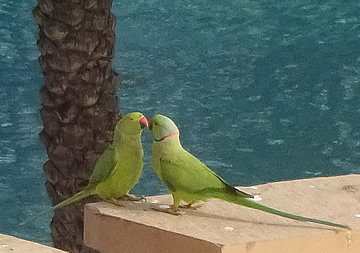
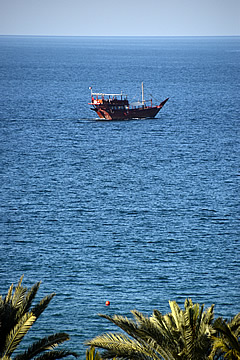
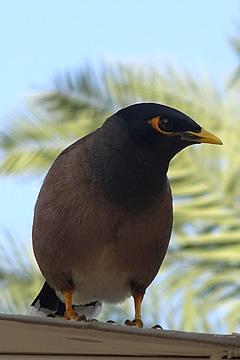
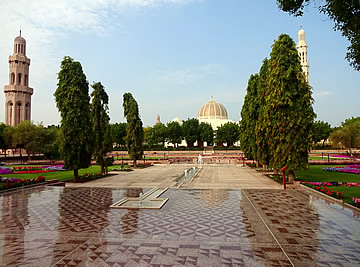
Kareem took us first to the magnificent mosque. He was an excellent guide, full of knowledge and an infectious enthusiasm for his country, as well as being a fantastic driver.
Sultan Qaboos was the much loved ruler of Oman from 1970 to his death in 2020. He had taken over from his deposed father, Said, who had apparently been very reluctant to spend revenue from oil, discovered in 1962, on the development of his country. Qaboos was very different, and set about a rapid modernisation and harmonisation of the country. One of his first acts was to change the name of the country from the "Sultanate of Muscat and Oman" to the "Sultanate of Oman", thus symbolically wiping out the historical divide between the interior and the coast.
The Sultan Qaboos Grand Mosque was opened in 2001.
Oman quickly embraced Islam. When the Prophet Mohammed died in 632 AD there ensued a great deal of instability in the Islamic world, centring on who should be his successor. Oman adopted Ibadhism, a democratic form of Islam which holds that any suitable Muslim can become a leader, but that he can be replaced if he does not act in accordance with the teachings of Allah.
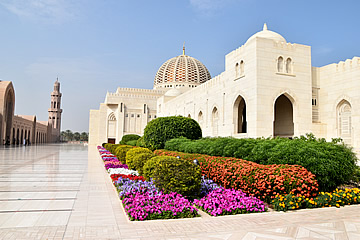
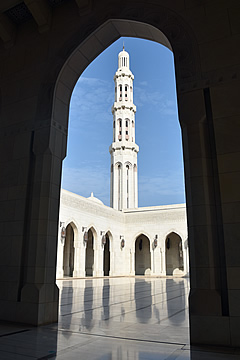
The mosque is magnificent. Clad in gleaming white marble and some red, it is of a relatively modern, sleek design, though still with a minaret at each corner of the walled compound and a larger minaret on the north wall.
The mosque is approached from the east through beautiful Islamic gardens, with rills of water and fountains and masses of colourful flowers, though Kareem said it is only at this time of year that the flowers are so beautiful, at other times it is too hot.
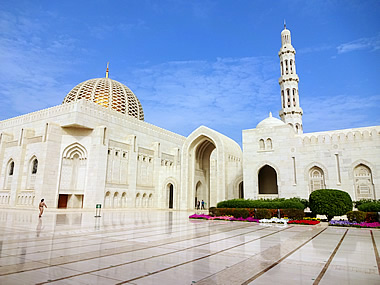
As usual there are two prayer halls, together with outdoor space they are able to accommodate 20,000 worshippers at a time.
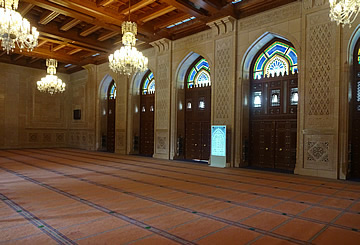
The women's prayer hall is vastly smaller than the men's, and also noticeably less opulent. It also does not have a mihrab, no-one leads the prayers in person, though recently TV screens have been installed to show the leader in the men's prayer hall.
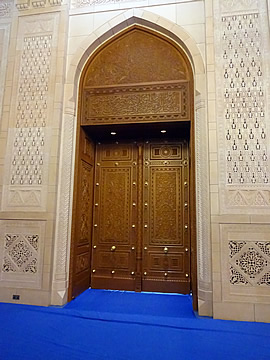
Nevertheless, it has beautiful carved sandalwood doors and marble walls, and a fine coffered ceiling.
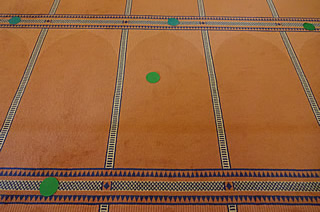
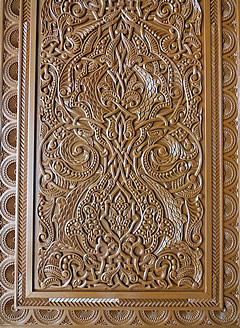
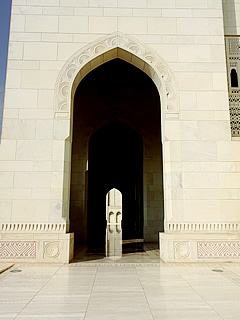
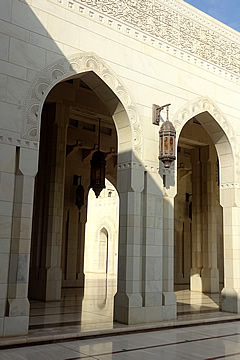
Both here and in other places of worship discs marked places for socially-distanced worshipping due to Covid. Traditionally in Islam worshippers pray shoulder to shoulder, allowing no space for the devil.
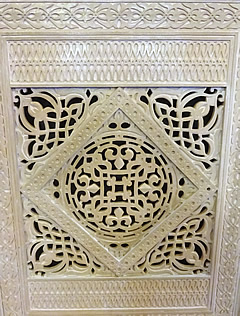
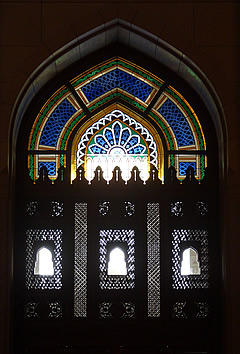
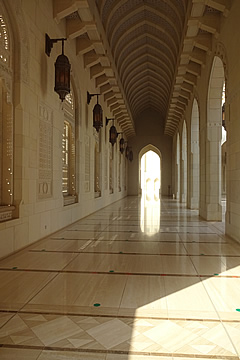
Leaving the women's prayer hall we walked through a beautiful marble corridor, one of four forming the sides of an open courtyard. In Christian architecture this would be a cloister. It was lined with arched, pierced openings and strung with lanterns. It is also an area for prayer and the familiar green discs could be seen on the marble floor.
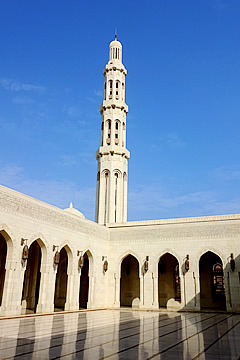
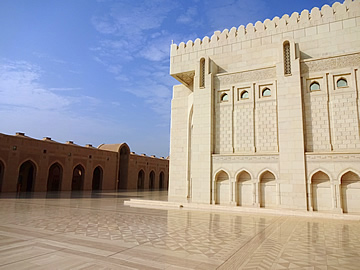
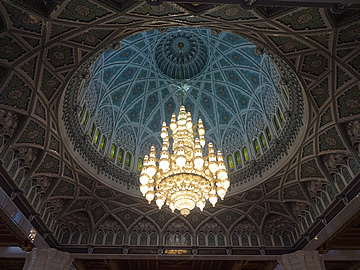
The men's prayer hall is vast. The Iranian carpet covering the floor is the second largest in the world (the largest is in a mosque in Abu Dhabi) at 263 square metres and was hand-made in six pieces before being flown to Muscat and the pieces stitched together in the mosque.
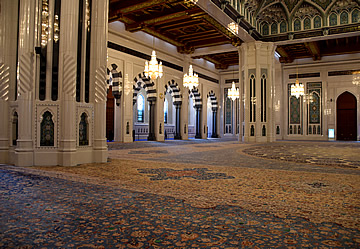
No less impressive, in fact quite stunning, is the 8 tonne Swarovski crystal chandelier hanging from the central dome.
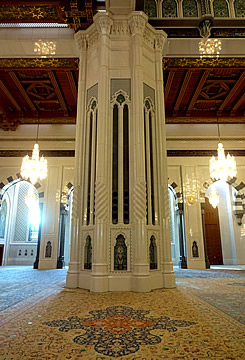
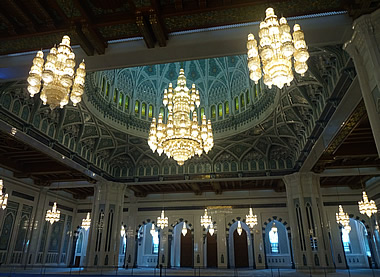
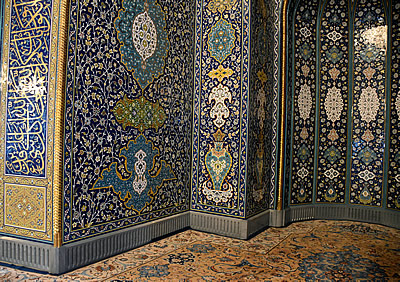
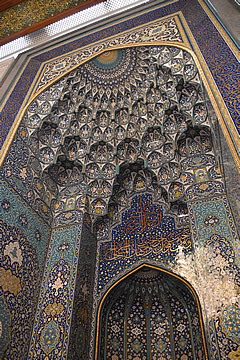
Before we left we visited the the Islamic Cultural Centre where we had cardamom coffee, ginger tea and lovely dates sitting in the shade. I had a very good discussion with a young Omani woman on Islam and Christianity and left with a pile of free books including an English translation of the Quran.
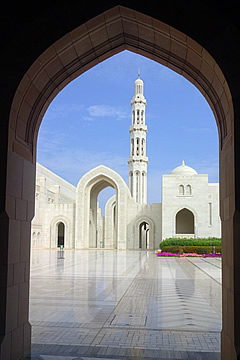
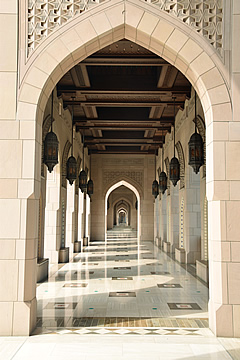
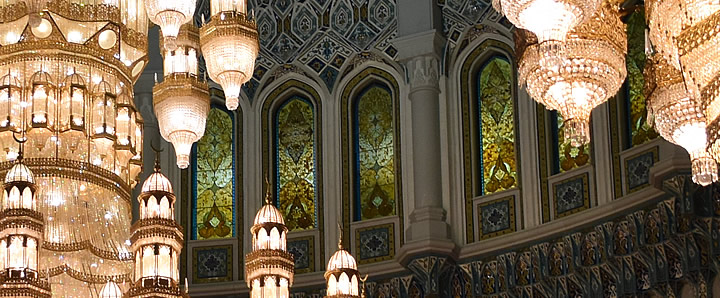
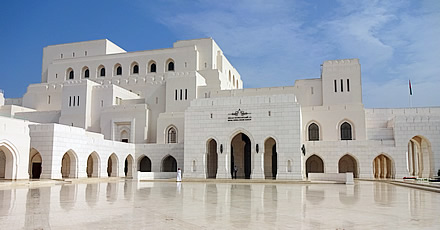
Sultan Qaboos was a huge fan of the opera and had this dazzling opera house built for productions of internationally famous opera companies. It serves as a centre for the arts including dance and music of all genres.
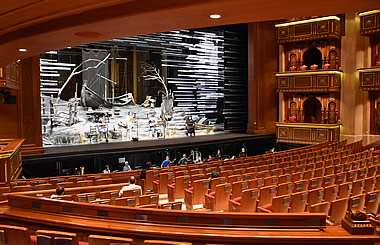
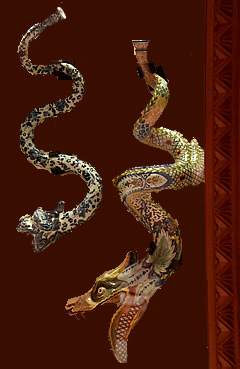
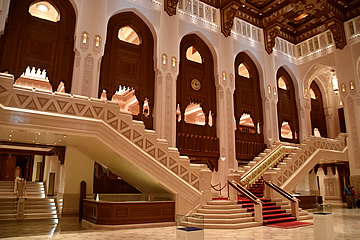
There is a small but interesting display of instruments outside the auditorium.
We were incredibly lucky to be allowed into the theatre while an Italian company were rehearsing Rigoletto.

There is evidence of a settlement in Muscat going back 6,000 years, and the port itself was mentioned in the writings of Pliny the Elder in the first century AD. It was a bit of a backwater until the Portuguese, who had arrived around 1507, destroyed the more prosperous ports of Qalhat and Quriyat.
The port at Muscat then grew and the town flourished in the Al Bu Said era.
An interesting character, Al Bu Said had become governor of Sohar and Burka through his military exploits and a 9 month siege of Sohar. He then proceeded to massacre the entire Persian garrison during a banquet! Muscat flourished during his 39 year reign which ended on his death in 1783. When the court was moved to Muscat by his grandson, Hamad bin Said, it began also to grow in political importance.
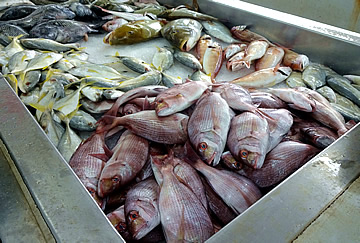
Muttrah is the centre of the town's commercial activity and we visited the souks there, starting at the fish souk. It's all very hygienic and cool with a wide variety of beautiful fresh fish and shellfish on sale.


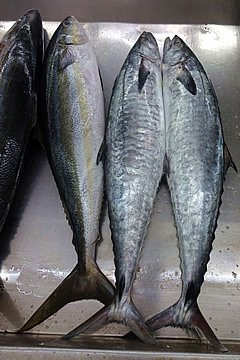
Kareem's favourite is kingfish - we tried it later and it is extremely good. One of the vendors waxed lyrical about his seafood, translated by Kareem. He was very keen to show us the difference between a male and female crab - the female has a dark belly patch. He had a bit of trouble finding a female in his catch, the overwhelming majority were male. Also, the tips of the large claws of the females are red rather than the blue of the males.
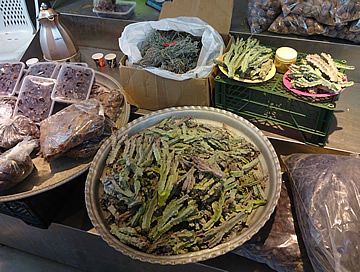
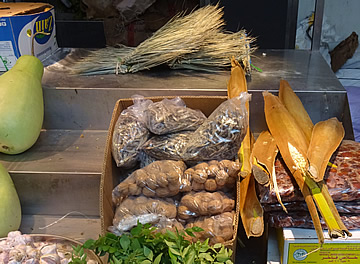
On to the fruit and veg souk and some unusual produce such as cactus leaves and dried lemons - masses of dates of course.
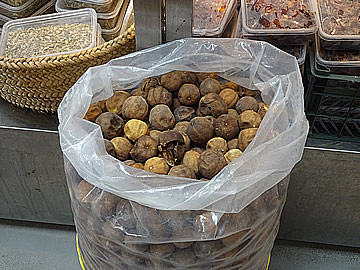
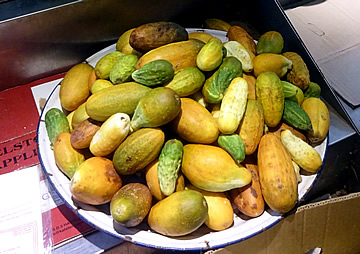
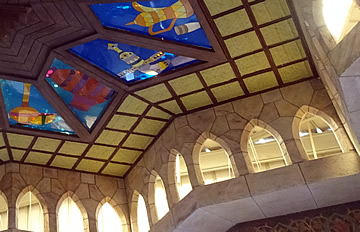
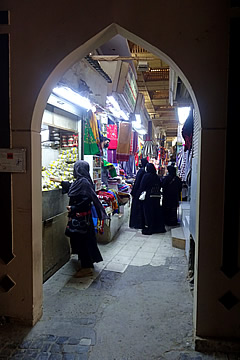
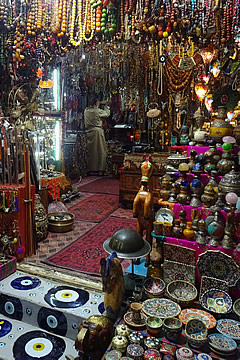
The main souk is a typical labyrinth of narrow covered alleys, fragrant with frankincense and lined with shops piled high with spices, clothes, metalwork, leather goods, fabric, and all kinds of hardware.
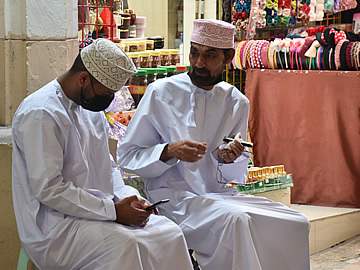
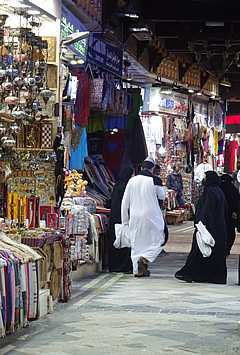
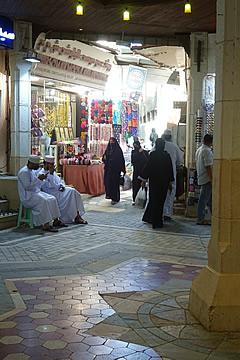
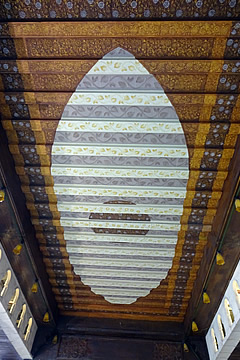
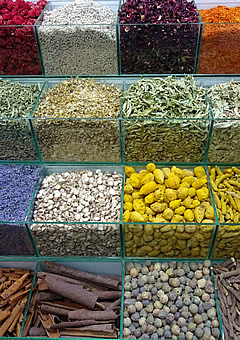
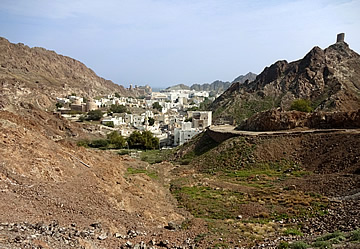
 Al Mirani Fort with Al Jalali Fort behind. They protect the entrance to the cove and the harbour of the old town.
Al Mirani Fort with Al Jalali Fort behind. They protect the entrance to the cove and the harbour of the old town.
We drove to Old Muscat via a terrific viewpoint before dropping down into the old town.
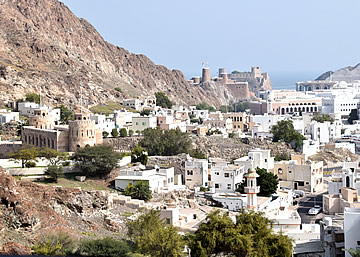
Old Muscat sits on a small bay, guarded by two forts, Al Mirani and Aljajali. It feels quite a different place to the modern city, which lies on the other side of rocky mountains, sleepier, more peaceful. Apparently it is now a sought-after place to live.
Bait Zubair is a great little museum - lots of interest on everyday life in Oman, culture and customs, dress and weapons, and not so much that it's daunting. It's easily investigated in an hour or so, especially if you're interested in one particular aspect. There are really excellent descriptions of various Omani forts.
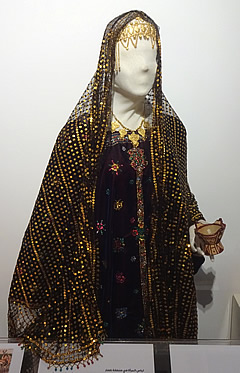
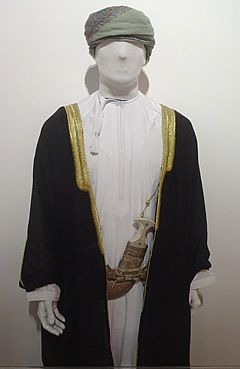
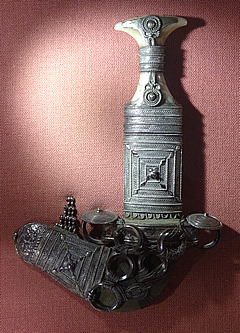
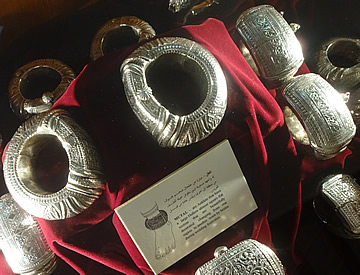
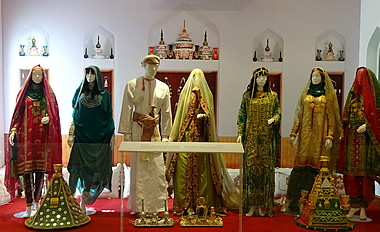
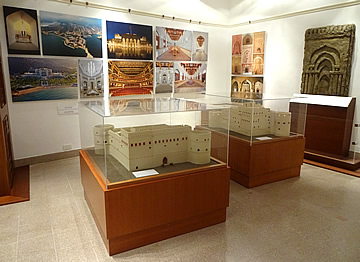
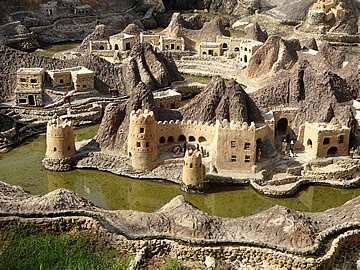
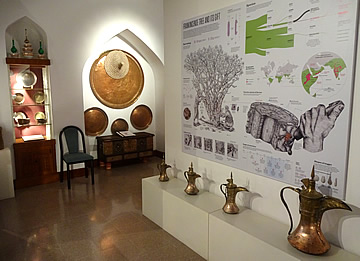
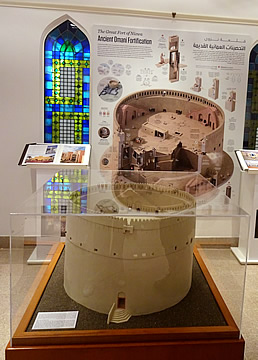
Next to the museum is a beautifully restored traditional home. As with all the old-style homes it is a warren of interconnected rooms.
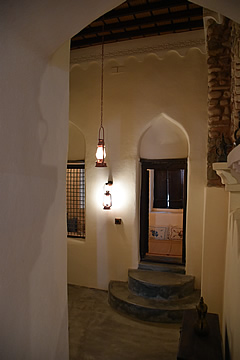
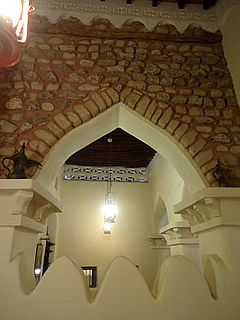
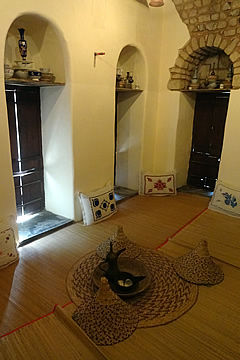
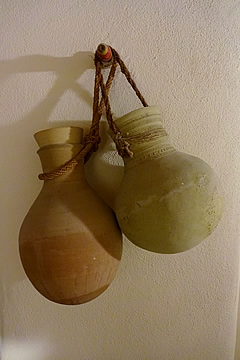
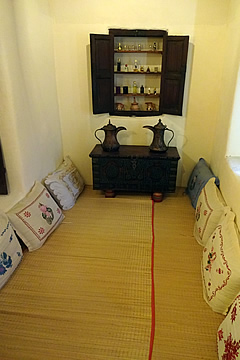
Water was stored in stoppered pots, suspended off the ground in lower rooms - it keeps amazingly cool.
Also on the lowest level was the date store, all Omani houses had one, and castles had enormous stores, not least because oil could be boiled and poured onto intruders!
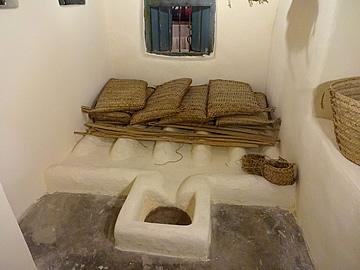
In a domestic setting the dates are stored in sacks on racks. The weight causes date juice to flow out and this is collected for consumption.
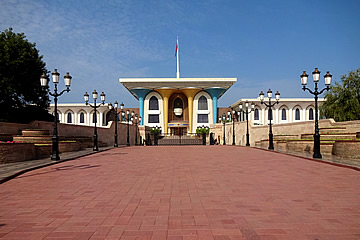
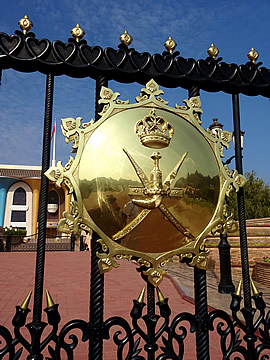
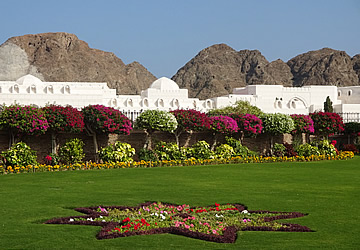
Still in Old Muscat, east of Bait Zubair, a long boulevard leads to this royal palace. Built in 1972 it's a uniquely colourful palace in blue and gold. The palace is not open to the public.
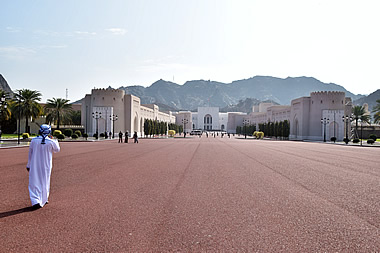
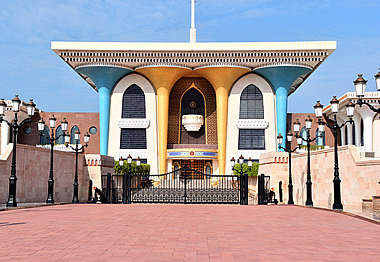
The rear of the palace looks out over lawns to the bay of Old Muscat, between the two forts of Al Mirani and Aljajali. It's possible to drive around to the bay but not to the area in front of the palace.